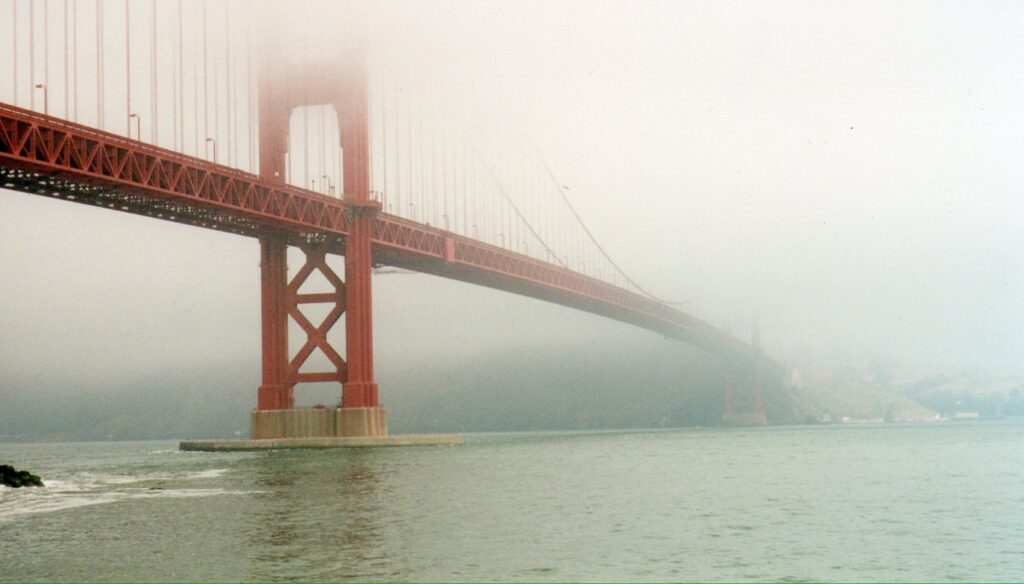By: Ernest Gurulé

It may be America’s most romanticized bridge, San Francisco’s Golden Gate. And despite the near daily sea salt baths it receives, this rust-colored, 1.7 mile wonder connecting San Francisco to Marin County, seems almost ageless. But the truth is that this architectural masterpiece is not far away from turning one hundred. But all indications are that when it reaches that magical number in 2033, it should still be good for a few more decades.
But while the Golden Gate may be in great shape, the same cannot be said for a huge portion of the country’s 620,000 other bridges. According to the American Road & Transportation Builders Association, there are nearly a quarter of a million U.S. bridges past due for major improvements.
The Association also says that nearly 80,000 of these structures should simply be demolished and replaced.
The country’s aging and ailing bridge problem could not have been punctuated more dramatically than late last month when Pittsburgh’s Forbes Avenue Bridge collapsed just before rush hour and only a few hours before President Joe Biden was scheduled to arrive in the city to tout his $1 trillion infrastructure bill, a bill that includes an estimated $1.6 billion for Pennsylvania’s bridge maintenance effort. By some miracle, the January 28th bridge collapse only resulted in three hospitalizations. Ten others were injured. But the failure set off warning alarms across the country, including in Colorado.
But, said CDOT spokesman Matthew Inzeo, Colorado’s bridges are regularly inspected to make sure that the kind of situation that occurred in Pittsburgh won’t happen here.
“The main point we have made to reassure the public is to explain the extensive process and dedicated funding Colorado dedicates to bridges,” said the state transportation spokesman.
In 2009 the state legislature passed a bill that autho- rizes $200 million annually “to improve roadway safety, repair deteriorating bridges, and support and expand transit.” The legislation, FASTER, stands for Funding Advancements for Surface Transportation and Economic Recovery Act.
The money is generated by fees on state drivers. An average Colorado vehicle owner, said CDOT, pays approximately $6 monthly. The funds are equally divided between state and local government.
Inzeo said CDOT has statewide staff “who maintain a complete inventory of our 3,447 bridges and are regularly performing inspections and identifying upcoming needs” on safety. Inspections, he said, are conducted on state bridges on a quarterly basis.
In the recently passed federal legislation totaling $1.2 trillion, states will receive $550 billion that will pay for improving the country’s bridges and roads along with a number of other things, including broadband and water and energy systems. The legislation comes at a time when the American Society of Civil Engineers has labeled America’s infrastructure at C-levels.
The bill, called the Infrastructure Investment and Jobs Act and signed in November 2021, was President Biden’s first major legislative accomplishment. While it is still to be determined just how much Colorado will receive, “We expect to see about $700 to $900 million above what we receive in formula funds over the next five years,” said Inzeo. “Those funds will support the completion of our 10 year plan on capital projects.” Colorado recently received “a five-year allocation of $225 million in bridge funds, which will supplement our existing programs and allow us to complete additional bridge projects,” he said.
While the Pittsburgh bridge collapse may have been an anomaly, it may also have been an ominous precursor to what could lie ahead. Because of exponential growth in some U.S. states and cities, “You just have these cities which are growing to an unprecedented extent, and the infrastructure was never designed to handle the amount of traffic that these structures are expected to deal with very day,” said the National Association of County Engineers Keven Stone.
While Pittsburgh’s bridge collapse is a serious infrastructure incident, it is by no means unique in this cat- egory. Also, say civil engineers, not all bridge failures are connected to aging, though aging and failure to address structural integrity are common issues in these catastrophes.
In August 2017, thirteen people died and nearly 150 were injured when Minneapolis’ I-35W bridge over the Mississippi River gave way during the height of rush hour. The span had been classified as structurally deficient and work to repair it was actually being undertaken when the incident occurred. Coincidentally, federal inspectors later determined that one thing that made have accelerated its collapse were the 300 tons of heavy equipment and materi- als for repairing it.
While Colorado has been vigilant in monitoring the safety of its nearly 3,500 bridges, a number of states have found themselves in catch-up mode, a situation that has only skyrocketed the costs for repairs or replacement. Many of these structures were built decades earlier at a fraction of the cost of what it will take to bring them up to 21st century safety standards. This ‘pay me now or pay me later’ philosophy on bridge maintenance will surely come as a heavy dose of cold water when current bills come due.
One example of how inflation would factor into replacement is the Golden Gate Bridge. When built in 1933, the San Francisco landmark came with a whopping $37 million dollar price tag. Should it somehow have to be replaced in today’s dollars, experts say the price tag could top out at a minimum of a billion dollars.


